The Black Ink Team's Guide To Grass Types
by Black Ink Team
Mowing a lawn is an art; planting a lawn is a science. One requires countless hours of honing your technique, the other requires a studied examination of soil and climate conditions. Grass comes in many different varieties which are each suited for different scenarios, and the wrong selection of grass planted in the wrong environment can die out, invite pests, cause an eye sore - or much worse.
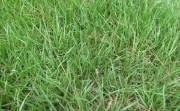
Planting grass isn't like buying a toaster oven, where any choice you make will end up with you getting toast: it is much more complicated and there are greater consequences for making an incorrect choice.

The first thing you are going to want to do, before you plant a single grass seed in your lawn, is ask yourself, 'what do you want and/or need out of your lawn?' Do you want a lawn that looks truly amazing? Do you desire grass that requires as little upkeep as possible (so you can focus more effort on the other accoutrements of your landscaping)? Does your property present unique and interesting problems for a grass species to face?

The key takeaway is this: take all the time you need on your grass-related requirements assessment; you can't overthink grass seeds.
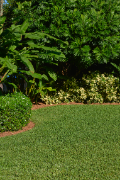
Since beauty is in the eye of the beholder, the best-looking grass depends on your own personal preference. There are grasses you can buy with lustrous blades, if that's what you're after - or if not there are grasses which leave room for wildflowers to grow alongside them.
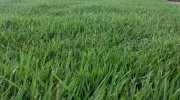
Keep in mind, and this is crucial - unsupervised grasses can become invasive species overnight. You and your neighbors should therefore enter into a mutual-assured-destruction-type-agreement, because if you're not paying attention your lawns can both become patchy faster than a star-nosed mole can destabilize a hosta bed.
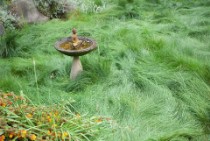
As every dedicated lawn care enthusiast knows, grasses belong to the family Gramineae, a distinction they share with several other celebrity plants (including, but not limited to): sorghum, oats, bamboo, and wheat. These superstars are monocotyledonous, meaning one leaf per one seed. What gives grass its ability to quickly grow back after being compotently mowed - or chewed by a well-behaved ruminant - is its meristem, a clump of undifferentiated cells at its base which sprouts a new leaf. The breeding/spreading mechanism for grasses consists of leaves growing sideways, discovering viable new soil, and delivering a cloned seed.
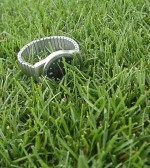
There are two types of grass species that are suitable for landscaping needs: warm-season (clump-forming) grasses and cool-season (sod-forming) grasses. The major players in the warm-season category are (i) bahiagrass, (ii) bermudagrass, (iii) centipedegrass, (iv) St. Augustine grass, and (v) zoysiagrass. They can handle extreme high temperatures, and go dormant (brown) once Winter comes around.

Big names on the cool side of the spectrum are (a) fine fescue, (b) Kentucky bluegrass, (c) perennial ryegrass, and (d) tall fescue. If you decide to choose cool-season grasses, you probably will want to deploy overseeding - lavishing your lawn with seeds during the fall, so that after the snow melts growth will be up to snuff.
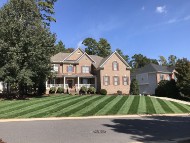
With all the equipment you need to use to keep a lawn looking fresh - a mower (to cut), a leaf blower (to remove debris), an edger (to define boundaries), a spreader (to plant seeds), a sprayer (to spray fertilizer/pesticide), a string trimmer (to clear brush), and a chain saw (to remove tree limbs generating unwanted shade), just to name a few - the oil and gas that unavoidably gets introduced to your lawn can potentially make it harder for grass to grow. Thankfully, there's battery options for getting the job done.
